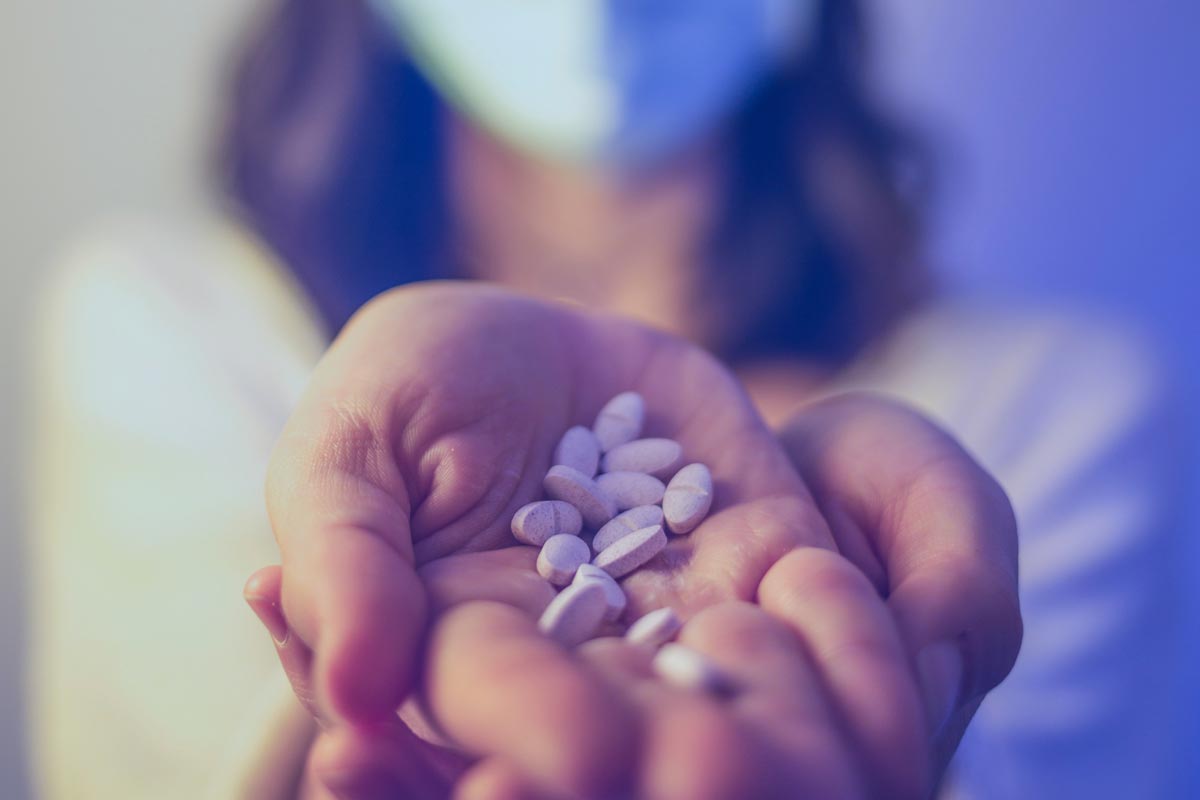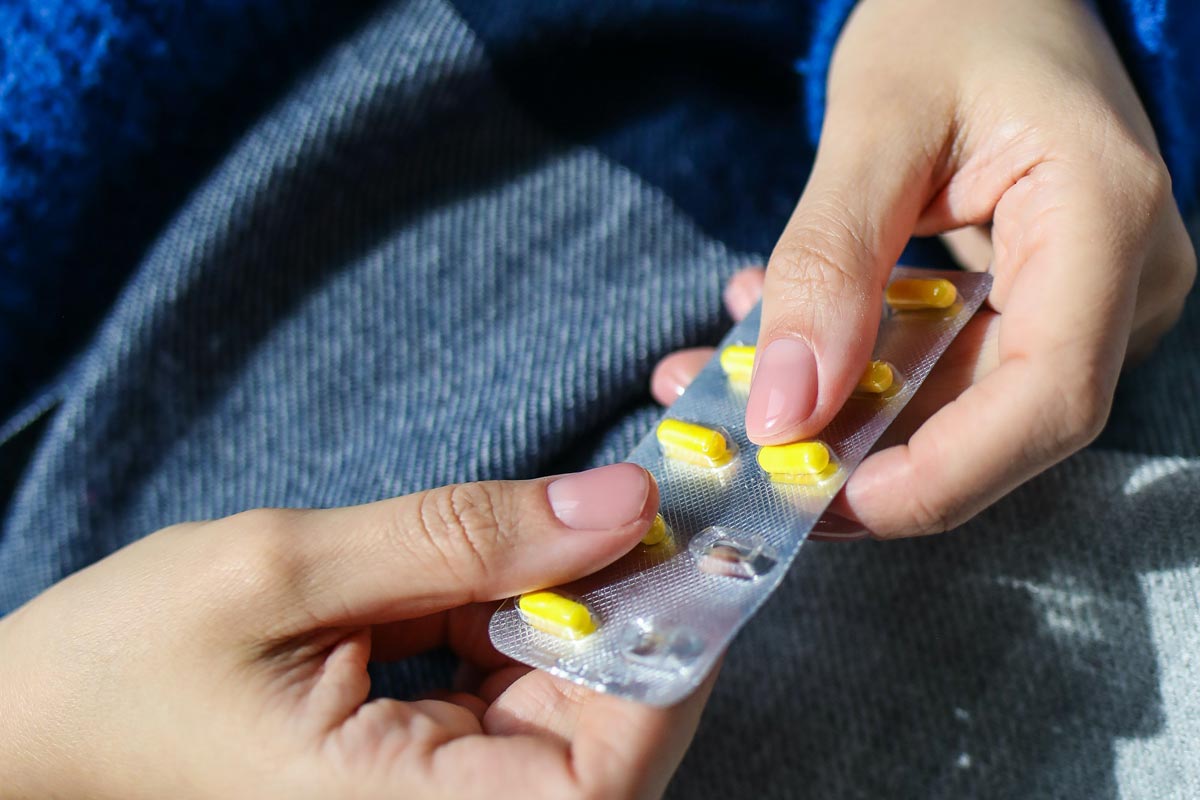
If you or a loved one has been prescribed an opioid or other pain pill after surgery, you probably have questions and concerns. Opioids are addictive with many people facing long-term battles with substance use disorder after a prescription. And, with 142.8 million opioid prescriptions filled in 2020, or enough for 43 out of every 100 Americans to receive one, opioids are everywhere. The good news is that you can’t just take opioid pain pills once and become addicted. The bad news is that there is a very real risk of chemical dependence and addiction following a course of pain killers. Those risks will vary depending on your dosage, your vulnerabilities, and the type of medication. However, understanding those risks and taking precautions will help you to stay safe, even when using risky medication.
How Long Does It Take to Develop Addiction?
For most people, addiction takes two weeks or more. However, the actual risks of addiction including chemical dependence can occur much more quickly. No one takes a pain pill and then is immediately addicted. However, many people can have so many risk factors that not becoming addicted after a single dose requires a significant amount of management.
Addiction involves chemical dependence and tolerance, psychological reliance, and seeking behaviors. Some of those factors can develop immediately but most take time.
- First Dose – Within the first dose of an opioid, someone can develop psychological changes that make them more vulnerable to addiction. Here, people with the largest risk factors are those with existing vulnerabilities such as childhood trauma, trauma, mental health disorders, or who are struggling with significant pain. Often, the first dose is the most impactful, because you have no chemical tolerance at all. For this reason, it can also create a seeking effect, where people increase usage to attempt to recreate the effect of the first usage.
- First Week – Most people begin to experience physical tolerance, where the effect of the drug reduces over time. This happens naturally, as the body adapts to having the drug present and reduces the amount of opioids you produce naturally. This means that the effect of the drug will wear off. Here, you might actually have to call your doctor to increase the prescription dosage if it’s no longer dulling pain enough. However, most will prefer not to. If you do so on your own, it greatly increases your risk of addiction. Some people might also start to show symptoms of dependence at this stage. Here, you rely on the drug to make you feel better. For example, if you’re in pain, you are depending on the drug to ensure that you don’t have to feel that pain and might panic without it.
- 2+ Weeks – After the first two weeks, your body adjusts to having opioids in your system. If you take them regularly or daily, that will mean you’ll experience physical withdrawal symptoms when you quit. If you’re following the prescription, you won’t likely experience anything more than light withdrawal symptoms. However, if you take more than the prescription those symptoms will escalate. In addition, after two weeks, you start to run risks of behavioral addiction. Here, you might start compulsively using, going out of your way to ensure you have drugs, and showing reliance on the drug. For example, refusing to leave without taking your prescription, taking the prescription when you don’t need it, etc. If you or someone else shows these symptoms, it’s important to get them help.
In most cases, it will take two or more weeks for substance use to get anywhere near where you could call it addiction. However, the changes that trigger addiction can happen almost immediately. Therefore, it’s important to pay attention to substance use, ensure that it stays healthy, and ensure that you’re using it in line with your prescription.
How Often Do People Become Addicted to Pain Pills?
While there were 147+ million opioid pain pill prescriptions filled in 2020, an estimated 2.7 million Americans have an opioid use disorder. Opioids are addictive but having a prescription does not automatically result in an addiction. Still, addiction rates are extremely high. For example, 10-18% of individuals with a 5-week prescription for painkillers require opioid use disorder treatment afterwards. For high strength prescriptions, that can go much higher. For example, individuals having knee and hip replacement surgery can have as much as a 53% rate of chemical dependence after 5 weeks.
Get Your Questions Answered
Our expert & caring staff on site are available 24/7. Call us today.
A Longer Prescription Increases Risks
The longer your pain pill prescription, the more likely you are to have problems with it. However, all opioid prescriptions are given with a Risk Evaluation and Management System (REMS). This will include evaluating what vulnerability factors you have, what your likelihood of addiction is, and taking steps to mitigate those risks. It also involves regular checkups, including to be sure that you aren’t using your drugs outside of prescription. E.g., if you were using too much, taking pain pills with alcohol, taking pills in situations where you shouldn’t, etc.

Eventually, addiction can happen to anyone and having identifiable vulnerability factors doesn’t always matter. The longer you take prescription medication, the more unavoidable it is that you develop chemical dependency and the more likely it is that you develop behavioral addiction.
Avoiding Addiction
If you or a loved one have been prescribed pain pills as part of recovery, there are plenty of steps you can take to manage your substance use.
Talk to Your Doctor – It’s important to talk to your doctor about your concerns or fears. Your doctor will likely be happy to offer you alternatives, including switching to prescription strength Tylenol at the earliest opportunity. For example, you may be able to get an alternative pain management schedule. You might also be able to get more checkups if you’ve had a history of addiction. And, your doctor will go over how you can mitigate risks without causing yourself unnecessary pain.
Only Take Medication When You Need It – It’s probably important that you take pain medication for the first few days after surgery. However, afterwards, you normally shouldn’t take pain medication unless you need it. That’s even more true if you’ve been prescribed pain pills for chronic pain. If you can avoid taking medication until you actually need it, you’ll reduce the risk of dependence and addiction. However, doctors are increasingly using slow-release painkillers for post-surgery pain medication. Here, you receive a patch or a slow-release pill and take one every 24-48 hours. You should always use those as directed, which may mean simply re-applying a patch every 24 hours for the first 4-5 days.
Stop As Soon as You Can – While it’s important not to cause yourself unnecessary pain, you should try to stop as soon as you can manage without the pain medication. Here, switching to prescription strength Tylenol is a valid option once the worst of the pain is over.
Getting Help
If you or a loved one is struggling with prescription pain pills, it’s important to get treatment. Rehab or substance use disorder treatment can help you to overcome that addiction. Here, counselors and therapists use behavioral therapy and talking therapy to help you uncover the underlying causes of addiction, to help you learn to cope with cravings, and to help you build coping mechanisms that don’t rely on drugs.
Eventually, pain pills are addictive. You should have the help you need to avoid becoming addicted while using them. If that doesn’t work, you can always reach out to ask for help getting off of them.
If you or your loved-one struggles from substance abuse please contact us today and speak with one of our experienced and professional intake advisors about our detox, partial hospitalization, and residential treatment programs. We’re here to help you recover.






